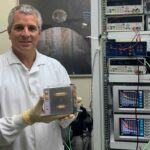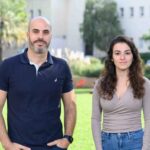
March 9, 2023
Imagine getting treatment for a perfectly healthy young heart that would allow it to recover from an otherwise devastating injury decades later.
If you think this prospect seems farfetched, you are not alone. Until recently, Professor Eldad Tzahor, whose lab at the Weizmann Institute of Science studies heart tissue regeneration, had also considered it science fiction. After all, cardiovascular diseases, which are humanity’s leading cause of death, aren’t generally perceived as something one can prepare for through preventive treatment.
However, Tzahor and researchers in his lab have now activated a cellular mechanism in healthy mouse hearts that makes these mice resilient to future heart attacks – even when they occur months later.
The procedure is a long, long way from being applicable to humans, the researchers stress. But their findings, published today in Nature Cardiovascular Research, reshape our understanding of the regenerative capabilities of the heart – and possibly other organs – and how they might be enhanced through preventive medical intervention.
“It’s a proof of concept and it points to new avenues of research that examine giving heart treatment not only after the damage happens, but from a preventive position that increases the capacity for recovery from an injury before the damage even occurs,” said Tzahor.
The study, led by Dr Avraham Shakked in Tzahor’s lab in Weizmann’s Molecular Cell Biology Department, focused on genetically engineered mice whose cardiomyocytes – the cells that make up the heart muscle tissue – overexpress a gene that triggers cell division in mice and other mammals, including humans. In previous studies scientists in Tzahor’s lab had found that the gene, ERBB2, causes cell division in cardiomyocytes – a remarkable occurrence because at around the time of birth these cells lose their capacity to multiply.
“During foetal development, our cells are assigned their different roles – nerves, cornea, heart muscle etc. – through a process called differentiation,” said Shakked.
“It’s characterised by a spectrum: On one end are stem cells, which are undifferentiated but capable of dividing and producing various types of cells. On the other end are highly-specialised cells like cardiomyocytes, which are no longer able to divide after becoming differentiated. They’re very effective in their function, but the tissue they comprise does not regenerate naturally.”
This is one of the reasons that cardiac episodes are so devastating. Heart attacks kill off massive numbers of cardiomyocytes that the body cannot regenerate. Therefore, even individuals who survive the attack are often left with reduced cardiac performance.
When, in previous studies, Tzahor’s team had managed to trigger the division of cardiomyocytes – by switching on ERBB2 briefly in these cells – overall heart function actually decreased temporarily, rather than improving straightaway. This happened because the ERBB2-expressing cardiomyocytes underwent dedifferentiation, meaning that they reverted to a less specialised state, closer to that of a foetal heart. This, in turn, limited their ability to contract, which is needed for proper heart function. But once the overexpression had stopped, the cardiomyocytes underwent redifferentiation – that is, they became highly specialised again – and cardiac performance improved.
In the new study, the scientists sought to understand what happens to hearts ‘rejuvenated’ by ERBB2 and how, exactly, they redifferentiated and returned to normal function once the gene had been switched off. The performance of such hearts was indistinguishable from that of the control group, but Shakked did notice some significant differences in gene expression between the two populations.
“It was surprising and curious. We had assumed that everything returns to normal after ERBB2 is switched off in the cardiomyocytes. Yet here we were, seeing a different genetic pattern – overexpression in some genes and under expression in others – following ERBB2 activation. In other words, we found long-term effects,” Shakked recalled.
This discovery made Shakked and Tzahor wonder whether ERBB2 expression could be calibrated for improved cardiac performance.
“It made us think that ERBB2 wasn’t just a switch that prevents differentiation, but part of a mechanism that could make the heart younger and more resilient,” Tzahor said.
To test this hypothesis, the researchers reversed the order of their previous experiments with ERBB2. Instead of switching ERBB2 on in injured mice to make their cardiomyocytes divide, they first switched it on in healthy mice for a few weeks and then switched it off again. Next, the researchers observed how the hearts of those mice coped with an injury. The result: Mice that had been made to overexpress ERBB2 recovered, but others did not.
“The data made our jaws drop! We had found a cardiac fountain of youth in those mice, a novel way of making the heart younger and stronger,” exclaimed Tzahor.
Currently, the research team is examining a number of hypotheses about mechanisms through which a brief overexpression of ERBB2 could help mice survive future heart damage. One possibility is that the gene triggers a series of changes that allow more cardiomyocytes to survive the lack of oxygen that is characteristic of heart attacks and is particularly destructive for cardiomyocytes.
The researchers also revealed how a negative feedback loop drives redifferentiation in cardiomyocytes.
“The body makes sure that differentiation happens because, generally, it doesn’t want cells that do nothing but divide, like cancer cells,” Tzahor said.
“That’s why ERBB2, while moving cardiomyocytes in the opposite direction of natural differentiation, simultaneously activates genes that trigger differentiation. There are checks and balances in place. If it weren’t for this mechanism, the dedifferentiated heart cells would not have been able to redifferentiate back to functioning cardiomyocytes.”
The team found that a mouse whose ERBB2 had been temporarily activated when it was three months old recovered from major cardiac injury that happened five months later.
“If we translate this to human years, it’s comparable to an 18-year-old getting treatment that allows that person to survive a heart attack at age 50,” Tzahor said.
However, this kind of treatment is at present nowhere near being applicable to human beings.
“We’re lowering the function of cardiomyocytes to allow them to be restored in the future,” Tzahor explained.
“From a clinical perspective, this is an extreme and drastic intervention. Still, at least in principle, our research might lead to a way of treating people who have a high risk of heart attack, before these attacks even happen.”
Other participants in the study included Zachary Petrover, Alla Aharonov, Dr Kfir-Baruch Umansky, David Kain, Jacob Elkahal, Yalin Divinsky, Shoval Miyara, Lingling Zhang, Dr Dahlia E Perez, Dr Rachel Sarig, Dr Daria Lendengolts and Dr Hanna Bueno-Levy of the Weizmann Institute of Science’s Molecular Cell Biology Department; Dr Matteo Ghiringhelli and Professor Lior Gepstein of the Technion – Israel Institute of Technology; Dr Phong Dang Nguyen and Professor Jeroen Bakkers of the Royal Netherlands Academy of Arts and Sciences and University Medical Center Utrecht; Dr Gilgi Friedlander of the Weizmann Institute of Science’s Ilana and Pascal Mantoux Bioinformatics Institute, the Nancy and Stephen Grand Israel National Center for Personalized Medicine; Dr Alon Savidor and Dr Yishai Levin of the Weizmann Institute of Science’s de Botton Protein Profiling Institute, the Nancy and Stephen Grand Israel National Center for Personalized Medicine; and Dr Nathaniel Kastan of The Rockefeller University, New York.
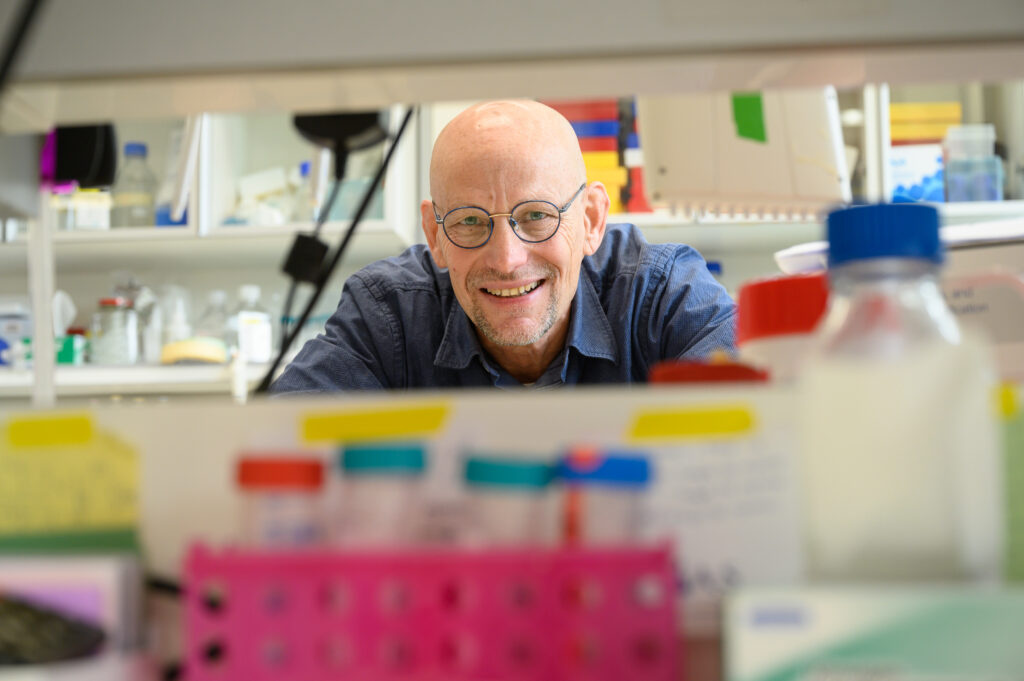
Professor Eldad Tzahor
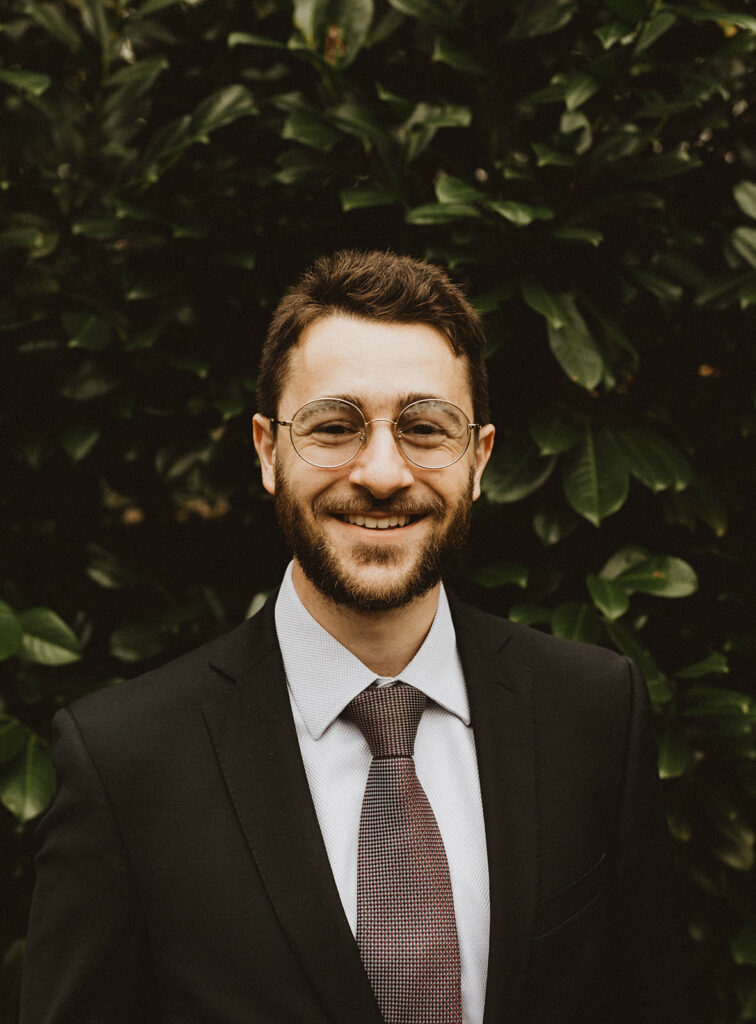
Dr Avraham Shakked
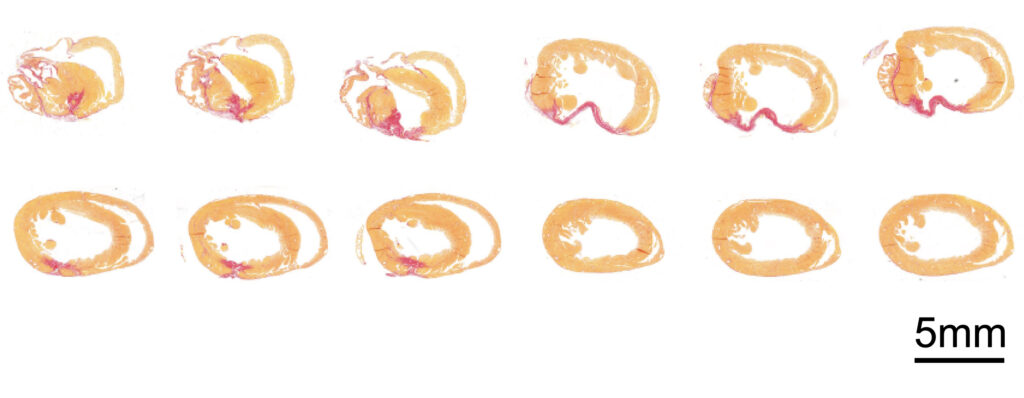
Mouse hearts after injury. Scar tissue (red) represents the extent of damage to the heart muscle. The damage was significantly reduced in mice whose ERBB2 gene had been temporarily activated (bottom row), compared to the controls (upper row)

The importance of redifferentiation: Proteins responsible for heart muscle contraction (green) are abundant in a healthy heart (left) and in a heart whose muscle cells had undergone successful redifferentiation after injury (center), but not in a heart whose cells failed to undergo such redifferentiation (right)

